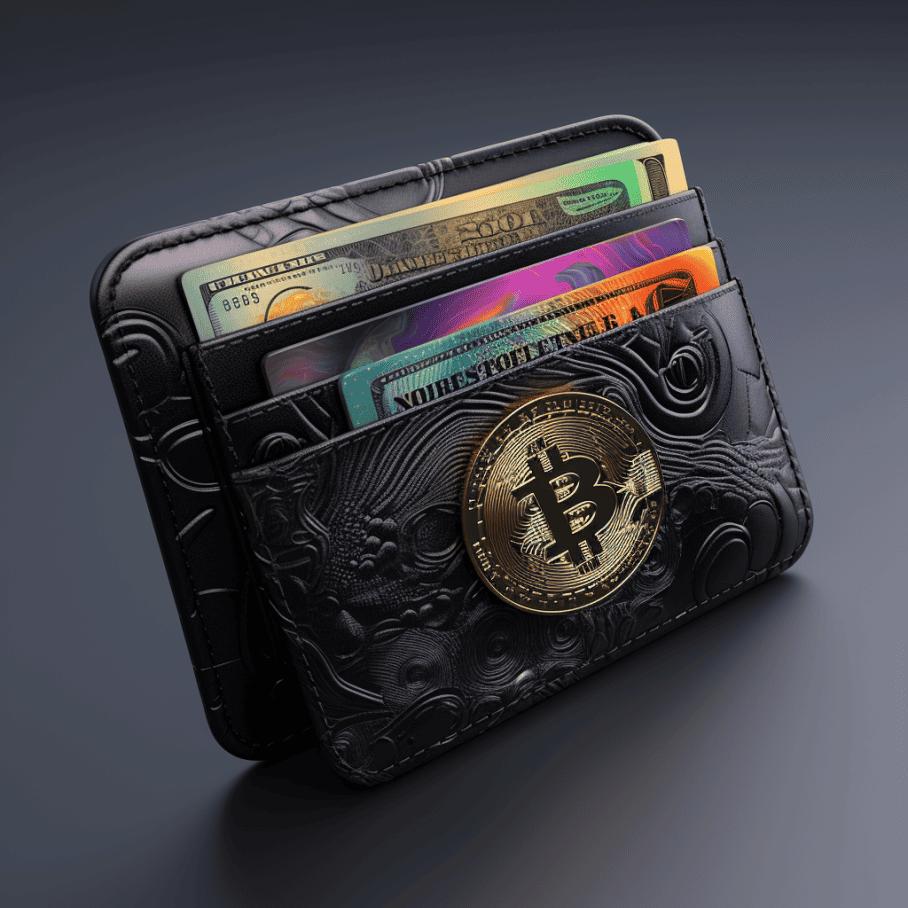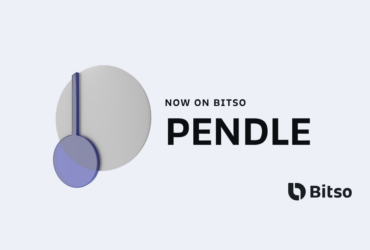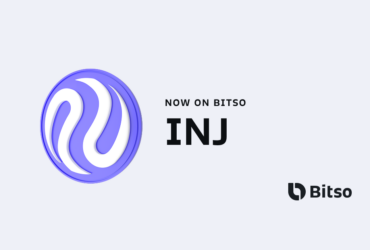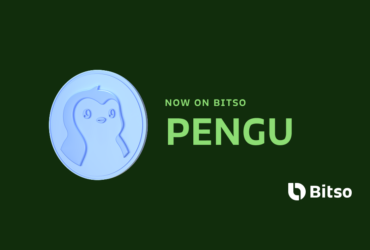Web3, commonly known as the decentralized internet, represents the next evolutionary phase of the web. It introduces features like blockchain-based systems and emphasizes user sovereignty over data. While building on the principles of decentralization, it coexists with and complements centralized platforms to enrich the digital ecosystem.
Introduction:
Welcome to the dawn of Web3, a pivotal phase in the digital evolution that promises to reshape the way we interact with the online world. The excitement of Web3 is palpable, offering a glimpse into a future where decentralization and innovation take center stage. Amidst the sea of new terms and concepts, navigating this landscape might feel overwhelming for beginners. But fear not, we’re here to help guide you through some of its more complex terms.
Here’s a comprehensive glossary that demystifies key terms and avoids technicalities, giving you the foundation to explore this new digital realm with confidence.
In this article, you’ll learn:
- Web3 Essentials: Understand the transformative shift of Web3 technology, embracing decentralization and user empowerment.
- Crypto Wallets and Security: Explore crypto wallets’ role in secure asset management and Multi-Party Computation’s enhanced key protection.
- Metaverse Engagement: Discover the metaverse’s immersive potential through NFTs and real-time interactions.
- DEXs and User Empowerment: Experience direct trading and staking on decentralized exchanges, embodying Web3 principles.
- NFT Uniqueness: Unlock the value of NFTs for art and asset representation using your compatible wallet.
The difference between Web3 and Web 3.0?
Before we delve into the glossary, let’s briefly touch on Web3 and the difference between it and Web 3.0. If you’re already familiar with this concept, please jump to the glossary below.
- Web3 Short Glossary: Navigating Key Terms
Web 3.0 and Web3 are often used interchangeably, but they can carry slightly different meanings depending on the context. Usually, Web 3.0 refers to the next generation of the internet, characterized by decentralized technologies, increased user sovereignty over data, and enhanced interactivity. Web 3.0 aims to move beyond the limitations of Web 2.0, where centralization and data privacy concerns have become more prominent.
Web3 on the other hand, is commonly used to refer to the set of technologies, protocols, and platforms that enable the transition to a more decentralized and user-centric internet. In this sense, Web3 encompasses various innovations, such as blockchain networks, decentralized applications, digital wallets, and protocols that prioritize privacy and security.
Our goal in this glossary is to introduce you to the key terms that give name and form to Web3 technologies. Below we’ll present 12 of the most used words in this new web, and we’ll explain a bit how and for what they work.
Ready?
Web3 Short Glossary: Navigating Key Terms
In this section, we’ll introduce you to 12 of the most essential terms in the realm of Web3, helping demystify its unique language and concepts.
1 Crypto Wallets
Cryptocurrency wallets are secure digital tools designed to store and manage various digital assets like cryptocurrencies and NFTs. Functioning as virtual vaults, these wallets come in different forms such as software, hardware, and mobile applications. They enable users to handle transactions and oversee their holdings securely. Cryptocurrency wallets serve as a foundational element in Web3, offering users the means to engage with decentralized ecosystems while upholding the principles of peer-to-peer interactions and ownership.
2 Public and Private Keys
Your digital identity depends on the robust security of public and private keys. The public key functions as your transaction address, while the private key acts as your digital signature, ensuring safe and secure interactions. In the realm of blockchain transactions, these keys play a pivotal role in ensuring authenticity and security. Thus, safeguarding your digital assets is paramount in the world of cryptocurrencies.
A good practice to keep your keys safe is using wallets that employ Multi-Party Computation (MPC) technology to enhance security. Through MPC, private key shares are distributed and encrypted among multiple parties. In other words, the wallet participates with you in the process of keeping your keys secure. This approach significantly reduces the risks associated with traditional storage methods, making it exceedingly challenging for malicious actors to compromise the keys.
3 Metaverse
The metaverse, an expansive digital expanse, intertwines virtual realms for user engagement via avatars. Enabled by technologies such as virtual reality (VR) and augmented reality (AR), this dynamic arena hosts real-time interactions, entertainment, education, commerce, and more.
Navigating the metaverse through a crypto wallet opens doors to various possibilities. For instance, you can buy NFTs, unique digital assets that represent ownership of art, collectibles, and even virtual land within the metaverse. This financial participation is facilitated by blockchain technology, ensuring the security and authenticity of transactions.
Popular metaverse decentralized applications (dApps) include:
- Decentraland: A virtual world where users own and build on virtual land parcels, monetizing their creations.
- The Sandbox: A platform for users to design, own, and monetize their gaming experiences and virtual assets.
4 Decentralized Exchanges (DEXs)
Decentralized exchanges (DEXs) are blockchain-powered platforms that enable direct cryptocurrency trading, and sidestepping intermediaries. These platforms use smart contracts for secure, automated transactions. Notably, DEXs are compatible with various crypto wallets, including those from centralized exchanges, making decentralized trading accessible.
DEXs offer an array of features, from real-time trading and token swaps to staking, which allows users to earn rewards by participating in network maintenance and validation. Additionally, users can engage in initial token offerings (ITOs) and provide liquidity to earn rewards. These exchanges contribute to the Web3 ecosystem by embodying the principles of decentralization, transparency, and user empowerment, aligning perfectly with the ethos of peer-to-peer interactions and ownership characteristics of Web3.
5 Token Swaps
Token swaps involve exchanging one cryptocurrency for another, typically facilitated on Web3 wallets. These exchanges operate using smart contracts, which enable direct peer-to-peer transactions without intermediaries.
Through a crypto wallet, users can initiate token swaps. For instance, you can trade Ethereum (aka Ether) for other cryptocurrencies like Matic, Solana, or Bitcoin. This process is secure and automated, ensuring transparency and efficiency. Token swaps provide a way to diversify your crypto holdings and participate in various projects within the blockchain ecosystem.
6 Staking
Staking involves holding a certain amount of cryptocurrency in a wallet to support a blockchain network’s operations and earn rewards. This participation helps secure the network and maintain its functions. When you stake, your tokens are used for various purposes like validating transactions or participating in consensus mechanisms.
While staking offers attractive benefits like reward accumulation and active participation in blockchain growth, it’s important to note that staked tokens are temporarily inaccessible. They are locked up for a predetermined period and cannot be freely used for transactions or any other purposes during this time. Although there are new concepts such as ‘liquid staking’, which enables you to swap your staked tokens, there are limitations to the type of transactions you can do. Therefore, it’s crucial to thoroughly study the staking mechanisms of the platform you’re considering, ensuring it aligns with your objectives and asset management strategy.
7 Initial Token Offerings (ITO)
Initial Token Offerings (ITOs) are fundraising events where new cryptocurrency tokens are offered to investors. These offerings allow projects to secure funding for development and operations. During an ITO, investors purchase tokens at a specific price, giving them ownership of the project.
Participating in Initial Token Offerings (ITOs) presents an exciting opportunity to support innovative crypto projects and potentially benefit from their success. Using your crypto wallet, you can engage in ITOs by purchasing tokens during the offering period. However, it’s crucial to approach ITOs with careful consideration. While ITOs offer the potential for rewards, they also come with risks, such as the project not reaching its goals or the tokens not gaining value. Thoroughly researching the project, including its goals, use cases, and team, is essential before investing.
8 Non-Fungible Tokens (NFT)
NFTs are one-of-a-kind digital assets crafted through blockchain technology, demonstrating ownership of unique items, artwork, or creations. Beyond just digital items, NFTs possess the ability to symbolize real-world assets, reshaping the notion of ownership and unlocking novel avenues for digital creativity and value generation. Artists, creators, and collectors are enthusiastically embracing NFTs, as they reshape ownership concepts in the digital era and lay the foundation for inventive modes of self-expression and asset representation.
With a wallet compatible with Web3, you can interact with NFTs by purchasing, storing, trading, and even selling your creations. This innovative approach empowers individuals to participate in the vibrant NFT ecosystem, redefining the way we engage with digital ownership and enabling new possibilities for artistic expression and asset management.
9 Smart Contracts: Enabling Trust and Automation
While not directly user-facing, smart contracts are the cornerstone that underpins the innovations of Web3. These digital constructs operate autonomously, executing actions when specific conditions are met. Think of them as dependable assistants who manage agreements on their own.
Smart contracts form the foundational framework for numerous Web3 breakthroughs. They’re the driving force behind Decentralized Exchanges (DEXs), making peer-to-peer trading possible without intermediaries. They empower the Metaverse and decentralized applications (dApps) to create immersive digital landscapes and interactive experiences. These contracts are the backbone of secure transactions, automated procedures, and transparent interactions that redefine our relationship with technology and one another.
10 Decentralized Applications (dApps)
Decentralized Applications, or dApps, are software applications that operate on blockchain networks, providing transparent, secure, and user-focused functionalities. They earn their name because they’re not controlled by a single entity, making them less vulnerable to censorship or control.
These applications run on various blockchain platforms like Ethereum, Binance Smart Chain, and Solana. They cover a range of uses, from decentralized finance (DeFi) platforms that redefine financial transactions to social networks that let users interact directly without intermediaries.
dApps offer users several advantages. They provide increased control over personal data and transactions due to their decentralized nature. Users can directly engage in financial activities like lending, borrowing, or trading without relying on traditional institutions. Additionally, dApps often provide enhanced security due to their use of blockchain technology.
11 Decentralized Finance (DeFi)
Decentralized Finance, or DeFi, refers to a revolutionary concept within the blockchain ecosystem that aims to recreate traditional financial services in a decentralized manner. DeFi platforms operate on blockchain networks like Ethereum, leveraging smart contracts to provide a wide range of financial services without intermediaries such as banks or brokers.
DeFi platforms encompass activities such as lending, borrowing, trading, and yield farming, all executed directly between participants through automated protocols. By removing intermediaries, DeFi aims to enhance financial inclusivity, reduce fees, and increase accessibility to a global audience. Users can interact with DeFi platforms using their crypto assets, earning interest, or participating in liquidity provision, all while retaining control over their funds and transactions. This groundbreaking approach to finance has the potential to reshape traditional financial systems and empower individuals with greater financial sovereignty.
12 DAOs (Decentralized Autonomous Organizations): A Governance Evolution
Decentralized Autonomous Organizations, or DAOs, revolutionize governance by leveraging code and smart contracts for collaborative and decentralized decision-making. These entities, referred to as “autonomous,” operate based on pre-established rules encoded in software.
Running on blockchain platforms like Ethereum and Binance Smart Chain, DAOs have applications across various domains, from overseeing investment funds to steering community-driven endeavors. In DAOs, you actively participate in shaping platform direction, suggesting changes, and participating in decision polls.
DAOs offer you enhanced inclusivity and transparency. By engaging in decision-making processes, you have a direct influence on project trajectories, fostering engagement and a sense of ownership. Moreover, DAOs streamline operations, reducing intermediary reliance and promoting efficient governance structures.
Pioneering Web3 and Beyond
Are you ready to dive into the realm of Web3? Today, the journey begins as you explore platforms and systems that align with the core principles of this new era – cryptocurrencies, the metaverse, blockchain, and beyond.
Imagine having a guiding platform that not only accompanies you on this transformative path but also infuses practical value into your daily digital assets. Take this opportunity and turn it into a tangible reality, propelling yourself toward the dynamic digital landscape that lies ahead.
Bitso transcends the role of a mere cryptocurrency exchange, evolving into a holistic ecosystem complete with a plethora of tools designed to amplify your crypto experience.
With Bitso, your assets and data are under fortified protection, leveraging cutting-edge blockchain technology and Bitso’s robust theft insurance policy. Enjoy the peace of mind that comes with maintaining absolute control over your digital world.
The dawn of Web3 is on the horizon, and Bitso enables you to be a proactive participant in this forthcoming evolution. Don’t wait – seize the moment and embrace the future. Download our app on Google Play or App Store today!





